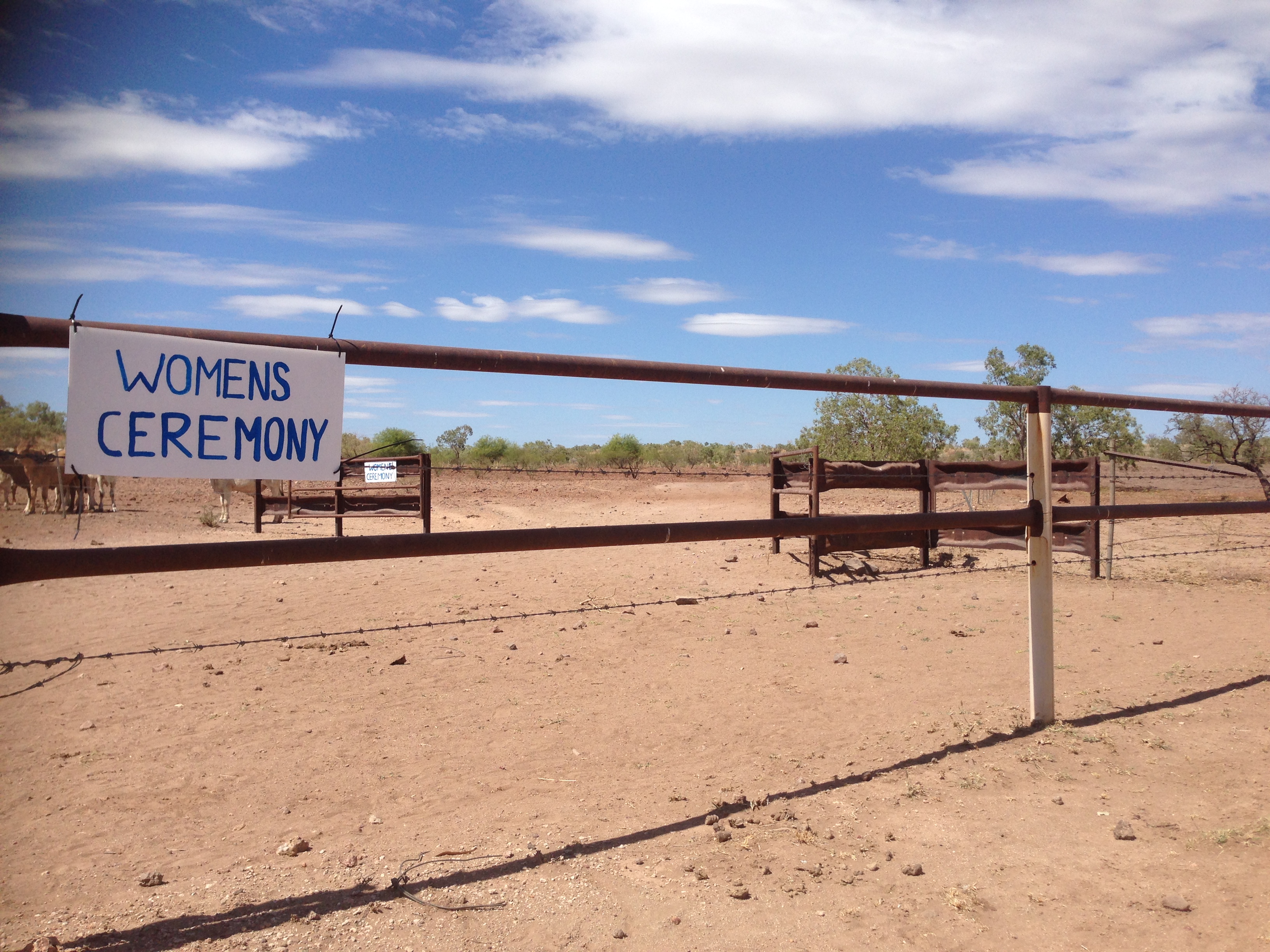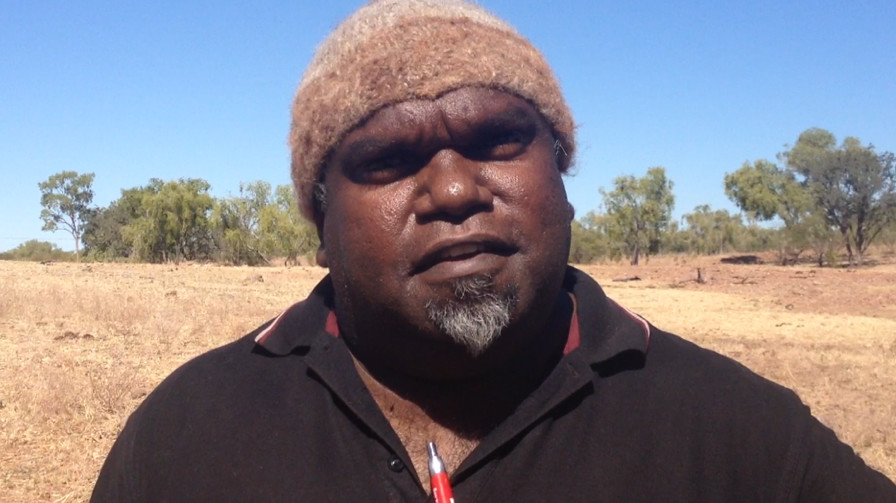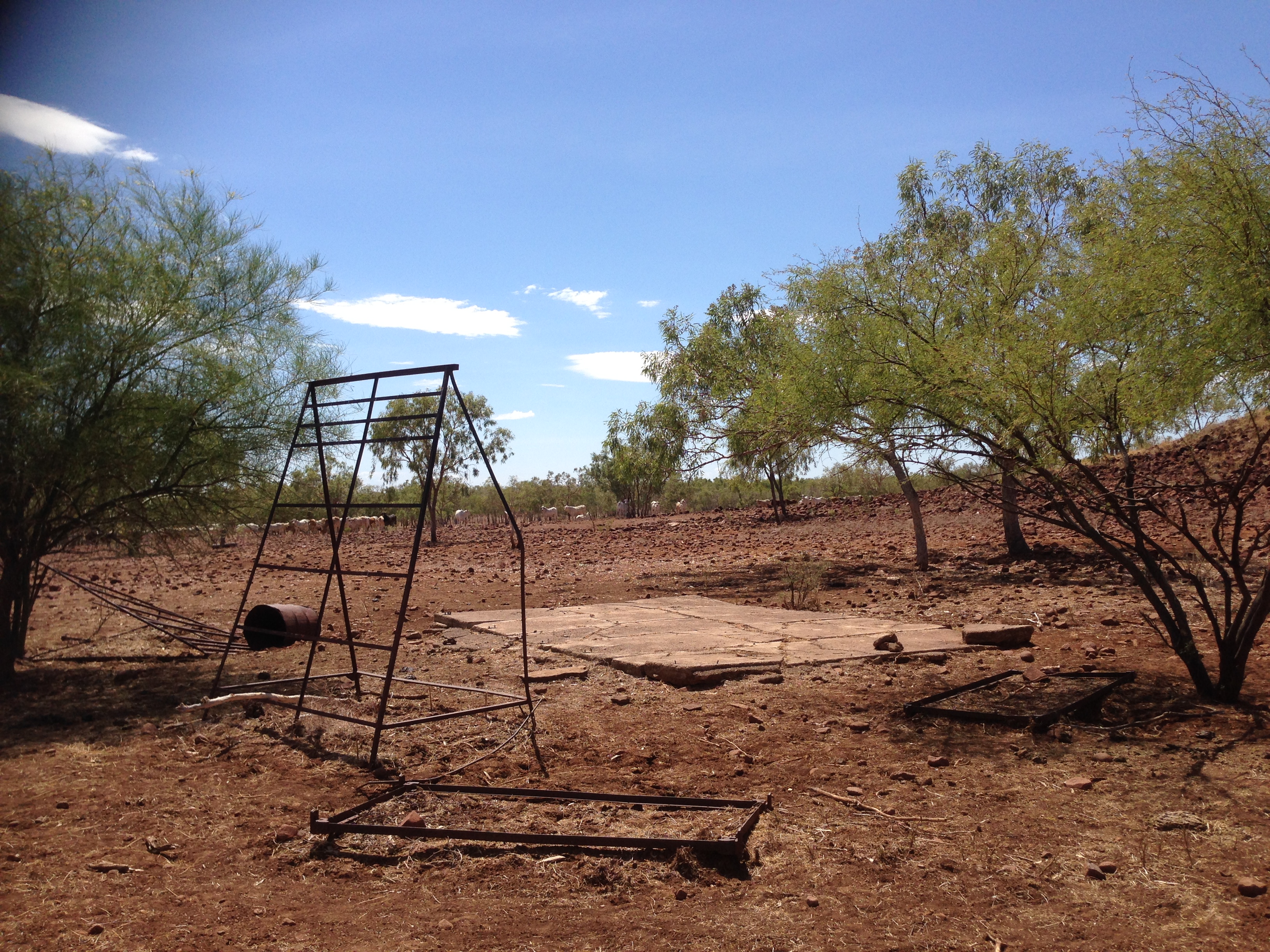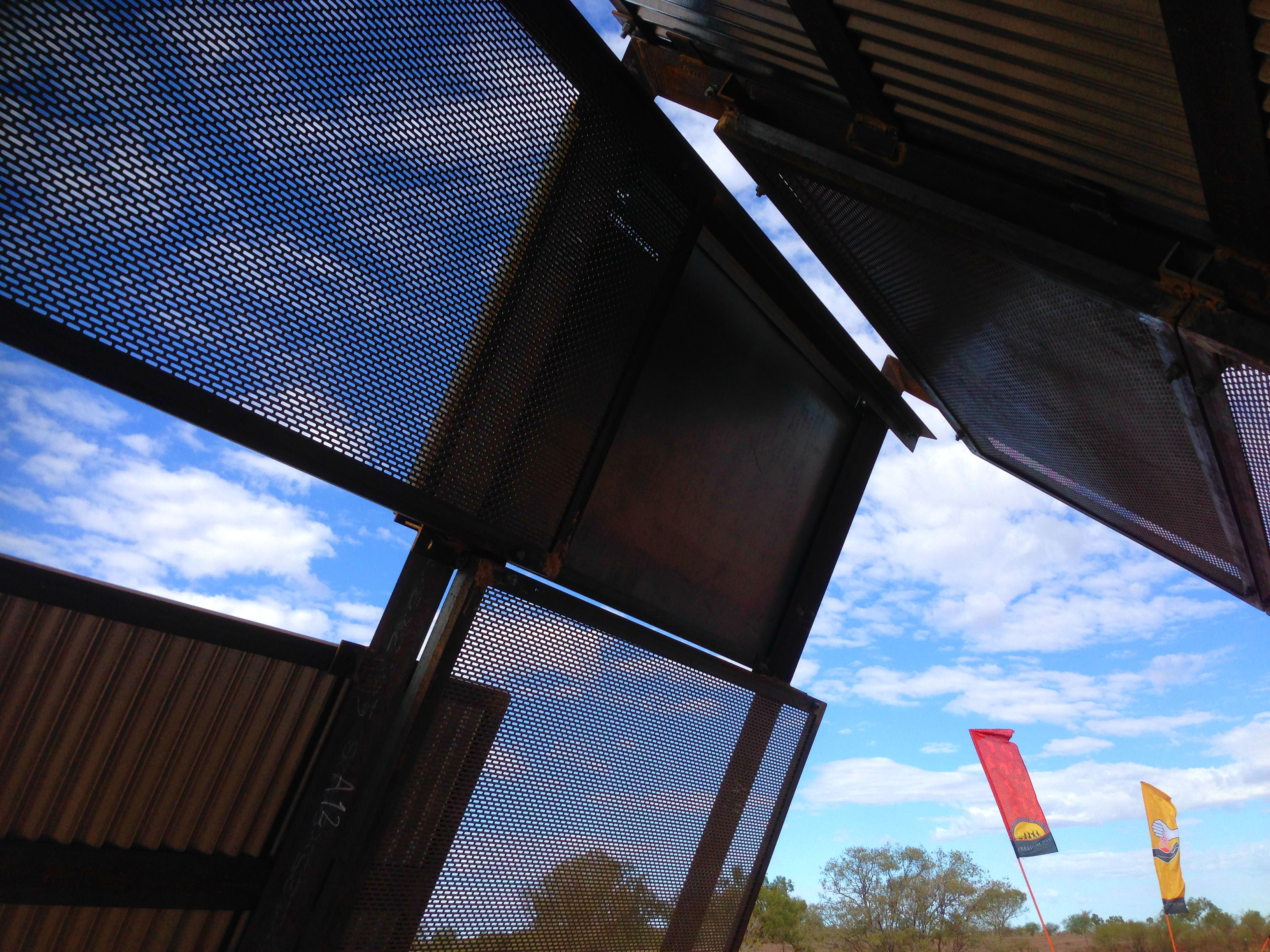
Arts & Culture
Garma 2016: Testing ground for new ideas and alliances

The Wave Hill walk-off changed the course of Australian history, yet the event suffers from a lack of recognition. Now, architects have become its unlikely champion.
Published 22 August 2016
In the tyrannical Central Australian heat, architects, their students and Kalkarindji locals heft 100kg sections of steel, piece by piece. The steel is scalding to the touch and grows heavier as long days of construction go on. Red dirt and dust mingle with sweat.
The Bower Studio, led by the University of Melbourne’s Dr David O’Brien, had just two weeks in May to build three four-metre high steel and iron pavilions in 38 degree heat.
Two years in the making, the Wave Hill Walk-off project has brought together six designers, 12 students, eight labourers and the Gurindji people of Kalkarindji and Daguragu in the Northern Territory to give physical form to remembering the birth of Australia’s Indigenous land rights movement.

The 50th anniversary of the Wave Hill Walk-off was celebrated at the Freedom Day Festival, where the Bower Studio pavilions were launched. Tourists used them for the first time as they walked the original trail. With Indigenous tourism in its infancy, Kalkarindji is a focal point of efforts to grow the industry.
On the 23rd of August 1966, an unprecedented 200 Gurindji, Mudburra and Walpiri stockmen, domestic workers, their elders and children walked off the Wave Hill Station in protest, unable to continue on criminally low wages, starvation rations, no housing and the constant violence meted out by the wealthy station owners.
The older people who took part in the walk-off had survived massacres in the region. They walked across open country, barefoot across rough terrain without water.
Led by Gurundji leader Vincent Lingiari and supported by unions and students across Australia, the strikers maintained their struggle for seven years. Ultimately it was their fight to reclaim the land which succeeded – the first land rights to be awarded. Three years later in 1976 the Aboriginal Land Rights Act was passed.

Until the work of the Bower Studio, no physical marker had been created to remember this nation-changing story. (The multi-award winning Bower Studio brings together architecture-focused academics and postgraduate students from the University of Melbourne to work with community groups and industry supporters, looking at real world issues of inequality, race, poverty, climate change and marginalisation and build multidisciplinary teams to address both short-term and long-term goals.)

Arts & Culture
Garma 2016: Testing ground for new ideas and alliances
Conventional thinking around architecture focuses on the design of large-scale buildings and the high-end redesign of private residences. Dr O’Brien, from the Melbourne School of Design, says: “Following this kind of thinking, architects are seen to offer their expertise to a very small percentage of the population.
“Fundamentally, design is about solving problems and improving our quality of life. Architects do so much more than design big buildings. We tell stories of culture and the past through our built environment.”
For more than nine years, Dr O’Brien has been consulting with Indigenous communities to collaboratively design and build the infrastructure of their choice.
“Aboriginal communities don’t often get to make choices about their contemporary built environment. The experience of engaging architects and occupying the role of client is unusual,” Dr O’Brien says.

The Gurindji people commissioned the Bower Studio to build shade pavilions and trail markers, which would embody the story of the walk-off along the path taken by the strikers in 1966. Visitors will follow these markers across the rocky, dry terrain and rest at the pavilions – Jinbarak, Junardi and Kalkarindji. The markers and pavilions were completed in June 2016.

Gurindji leader Rob Roy explains the significance of the Wave Hill Walk-off project. “We want to continue the legacy left by Vincent Lingiari. We celebrate the walk-off every year on its anniversary. The 50th, this year, is very important to Gurindji people, but it’s also important to all Australians. The Bower Studio work strengthens our capacity to celebrate our culture.”
The designs, as well as their materials, express the artefacts left behind on the abandoned Wave Hill Aboriginal worker camp site.
“After the strikers walked off the station, the station owners tried to bribe them back by pouring concrete slabs, as if they planned to erect real housing for them (previously the strikers had lived in self-erected humpies).These slabs are set in a grid. Both the slabs and their layout are recreated for the foundations of our pavilions,” Dr O’Brien explains.
“The triangle frame found onsite determined the shape of the pavilions, which is also seen in the shape of the tent dwellings used by the strikers during their years off the station. The stories given to us in the consultation process drove the idea for continuing the use of triangular structures.”

The workers’ site is strewn with rusted bed frames which sink into the red outback landscape.
These were drawn on for Dr O’Brien’s favourite design elements. “These bed frames are reflected in the attachment of perforated frames onto the pavilion structures. Dappled sunlight floats over the original, abandoned bed frames through the overhanging trees. We brought this dappled light into the pavilions through perforations in the steel.”

A balance between literal interpretation and abstraction needed to be found. “Somewhere in that mix there is that perfect expression of the cultural and historical narrative that the Gurindji people wish to tell,” Dr O’Brien says.
It may seem counter-intuitive to build a scene of heartache, terror and deprivation into the memorial pavilions. But the strikers that remain in Kalkarindji, Dagaragu and the Gurindji country return to the site regularly. Dr O’Brien says: “The elders come to the old camp to tell their stories. They are so proud that they struggled, and overcame the harshest of experience, the most terrible of conditions.

“They have no ill will towards this place. There is still a resentment toward Lord Vestey, the owner of the Wave Hill Station during the strike. It is their land. It was never Lord Vestey’s land. Coming back here, for the elders, is coming back into their space. This only happened 50 years ago.”
Learn more about the Bower Studio
Banner Image: Jinbarak pavilion under construction. Picture: David O’Brien